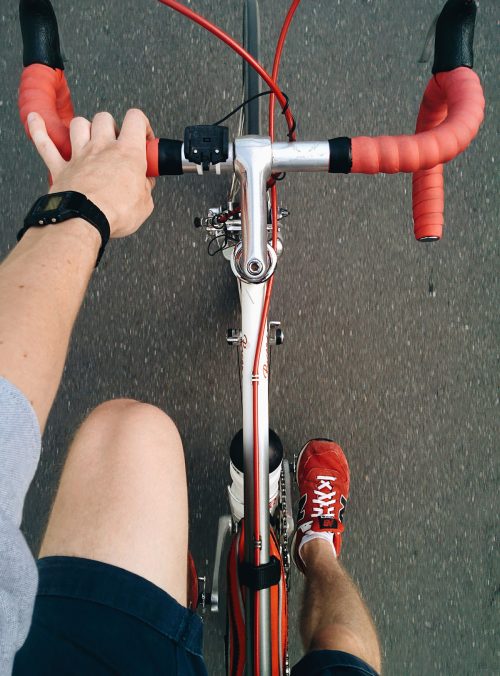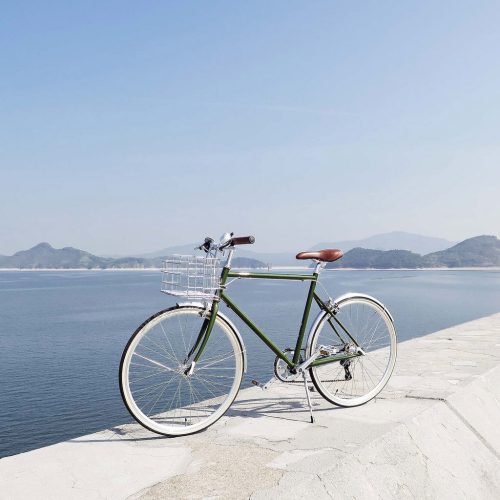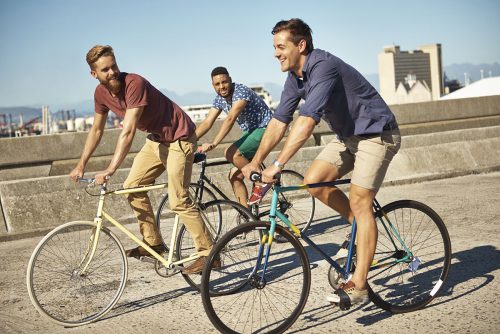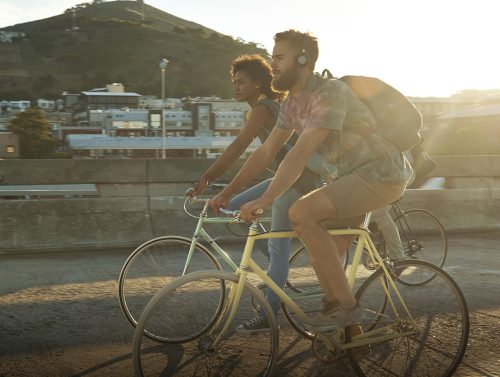- About me
- About us
- Best Selling Products
- Blog Fullwidth
- Blog Grid
- Blog Masonry
- Blog Medium
- Blog Wide
- Booking
- Cart
- Cart
- Checkout
- Checkout
- Contact us
- Default page
- Ecwid Store
- Elements
- FAQ
- Featured Products
- Fullwidth Category
- Homepage 1
- Homepage 2
- Homepage 3
- Icons
- My account
- My Account
- Order Tracking
- Popular Products
- Pricing Table
- Product categories layout test
- Product Detail 1
- Product Detail 2
- Product Extra Option
- Product Extra Option
- Products by ID
- Products by Sku
- Recent Products
- Sale Products
- Sample Page
- Shop
- Shop
- Shop grid
- Shop Grid Left Sidebar
- Shop Grid Right Sidebar
- Shop list
- Shop List Left Sidebar
- Shop List Right Sidebar
- Store
- Test Drive
- Typography
- Under Construction
- Wishlist
Blog Masonry
Blogging is either free or inexpensive, and you can get started in moments by creating a blog on a site like WordPress.
- Home
- Blog Masonry
Survive long bike road trips
So, you like to ride your bike all the time, going maybe two to five miles a few times a week. Why not go for a longer ride? Here’s how, with a bit of preparation, you can make sure you survive your trip with your sanity intact.
In order to train for a long bike ride, you need a way to keep up with your riding, such as a simple cyclometer. You should be able to find one at a reasonable price. Before your bike ride, map your route with a car, noting landmarks every two and a half and every five miles, then just every five miles for the first twenty-five miles. These landmarks should be places where you can stop for water or a small snack. You should not stop at a landmark for more than ten minutes, nor should you make stops in between your landmarks. Begin with a thorough inspection of your bike, making sure that it is properly adjusted and ready to go. Then put your helmet on and head out to your first two and a half-mile landmark. Once you get there, think about how you are feeling. Are you ready to keep going to the next landmark, or do you need to turn back?
Every five days of your training period, increase your distance. Within a month, you should be able to reach a goal of around fifty miles or so.
If you travel at beginner’s speed, then you will be riding at a speed of somewhere around eight to ten miles per hour. Therefore, a fifty-mile ride should take you about five or six hours to complete.
With every sport, there comes the risk of injury. There are many injuries associated with cycling. Many of these injuries can be easily avoided by following safety precautions and maintaining a constant level of awareness. However, even expert cyclists make mistakes. Common injuries include road rash, bruising, cuts, scrapes, and bug bites. These injuries will heal.
There are some cycling injuries that will not heal by themselves. These injuries can be prevented if proper cycling techniques are employed and the cyclist does not train too hard, too quickly.
Riders with more experience and multi speed bicycles may be to do a fifty-mile ride in under three hours. In fact, some seasoned riders can do a hundred mile ride in just over four hours. However, rides at this great of a distance should not be attempted unless have an interest in becoming a professional cyclist.
To bike or not to bike
A brand new bike – Sam Lachow
Well, I don’t know about y’all, but I’m fine.
What you wanna do. What you got in mind.
Would you mind if I rode my bike for a little while.
It seems like we’re…
An overview on bicycles
A bicycle, often called a bike or cycle, is a human-powered, pedal-driven, single-track vehicle, having two wheels attached to a frame, one behind the other. A bicycle rider is called a cyclist, or bicyclist.
Bicycles were introduced in the 19th century in Europe and, as of 2003, more than a billion have been produced worldwide, twice as many as the number of automobiles that have been produced. They are the principal means of transportation in many regions. They also provide a popular form of recreation, and have been adapted for use as children’s toys, general fitness, military and police applications, courier services, and bicycle racing.
The basic shape and configuration of a typical upright, or safety bicycle, has changed little since the first chain-driven model was developed around 1885. But many details have been improved, especially since the advent of modern materials and computer-aided design. These have allowed for a proliferation of specialized designs for many types of cycling.
The bicycle’s invention has had an enormous effect on society, both in terms of culture and of advancing modern industrial methods. Several components that eventually played a key role in the development of the automobile were initially invented for use in the bicycle, including ball bearings, pneumatic tires, chain-driven sprockets, and tension-spoked wheels. The word bicycle first appeared in English print in The Daily News in 1868, to describe “Bicycles and tricycles” on the “Champs Elysées and Bois de Boulogne.” The word was first used in 1847 in a French publication to describe an unidentified two-wheeled vehicle, possibly a carriage. The design of the bicycle was an advance on the velocipede, although the words were used with some degree of overlap for a time.
Other words for bicycle include “bike”,”pushbike”, “pedal cycle”, or “cycle”.
An overview on bicycles
A bicycle, often called a bike or cycle, is a human-powered, pedal-driven, single-track vehicle, having two wheels attached to a frame, one behind the other. A bicycle rider is called a cyclist, or bicyclist.
Bicycles were introduced in the 19th century in Europe and, as of 2003, more than a billion have been produced worldwide, twice as many as the number of automobiles that have been produced. They are the principal means of transportation in many regions. They also provide a popular form of recreation, and have been adapted for use as children’s toys, general fitness, military and police applications, courier services, and bicycle racing.
The basic shape and configuration of a typical upright, or safety bicycle, has changed little since the first chain-driven model was developed around 1885. But many details have been improved, especially since the advent of modern materials and computer-aided design. These have allowed for a proliferation of specialized designs for many types of cycling.
The bicycle’s invention has had an enormous effect on society, both in terms of culture and of advancing modern industrial methods. Several components that eventually played a key role in the development of the automobile were initially invented for use in the bicycle, including ball bearings, pneumatic tires, chain-driven sprockets, and tension-spoked wheels. The word bicycle first appeared in English print in The Daily News in 1868, to describe “Bicycles and tricycles” on the “Champs Elysées and Bois de Boulogne.” The word was first used in 1847 in a French publication to describe an unidentified two-wheeled vehicle, possibly a carriage. The design of the bicycle was an advance on the velocipede, although the words were used with some degree of overlap for a time.
Other words for bicycle include “bike”,”pushbike”, “pedal cycle”, or “cycle”.
Ass savers – bicycle mudguards
Bicycles were introduced in the 19th century in Europe and, as of 2003, more than a billion have been produced worldwide, twice as many as the number
Around New York by bike!
In utility cycling there is a large variation; an elderly person on an upright roadster might do less than 10 km/h (6.2 mph) while a fitter or younger person…
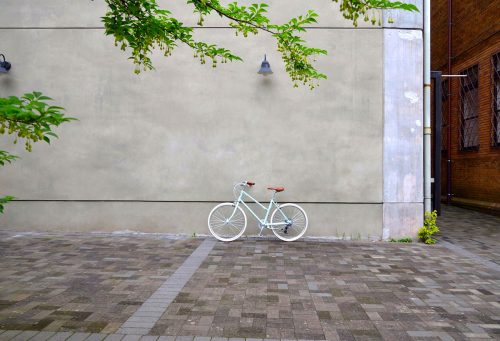
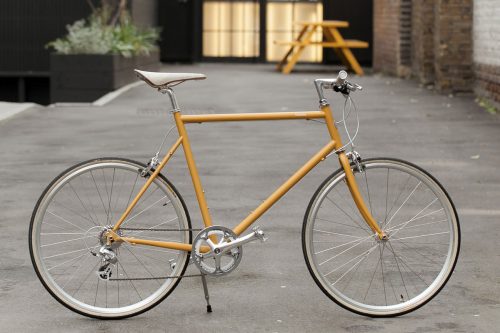
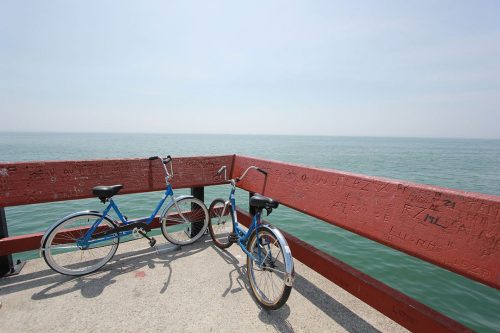
How do bicycles operate?
A bicycle’s performance, in both biological and mechanical terms, is extraordinarily efficient. In terms of the amount of energy a person must expend to travel a given distance, investigators have calculated it to be the most efficient self-powered means of transportation. In terms of the ratio of cargo weight a bicycle can carry to total weight, it is also a most efficient means of cargo transportation.
Mechanical efficiency
From a mechanical viewpoint, up to 99% of the energy delivered by the rider into the pedals is transmitted to the wheels (clean, lubricated new chain at 400W), although the use of gearing mechanisms reduces this by 1-7% (clean, well-lubricated derailleurs), 4-12% (chain with 3-speed hubs), or 10-20% (shaft drive with 3-speed hubs). The higher efficiencies in each range are achieved at higher power levels and in direct drive (hub gears) or with large driven cogs (derailleurs).Energy efficiency
A human being traveling on a bicycle at 16–24 km/h (10–15 mph), using only the power required to walk, is the most energy-efficient means of human transport generally available. Air drag, which increases with the square of speed, requires increasingly higher power outputs relative to speed, power increasing with the cube of speed as power equals force times velocity. A bicycle in which the rider lies in a supine position is referred to as a recumbent bicycle or, if covered in an aerodynamic fairing to achieve very low air drag, as a streamliner. On firm, flat ground, a 70 kg (150 lb) person requires about 60 watts to walk at 5 km/h (3.1 mph). That same person on a bicycle, on the same ground, with the same power output, can travel at 15 km/h (9.3 mph) using an ordinary bicycle, so in these conditions the energy expenditure of cycling is one-third of walking.Typical speeds
In utility cycling there is a large variation; an elderly person on an upright roadster might do less than 10 km/h (6.2 mph) while a fitter or younger person could easily do twice that on the same bicycle. For cyclists in Copenhagen, the average cycling speed is 15.5 km/h (9.6 mph). On a racing bicycle, a reasonably fit rider can ride at 40 km/h (25 mph) on flat ground for short periodsReduction of weight and rotating mass
There has been major corporate competition to lower the weight of racing bikes in order to be faster uphill and accelerating. The UCI sets a limit of 6.8 kg on the minimum weight of bicycles to be used in sanctioned racesSocial aspects of bikes (P.2)
Around the turn of the 20th century, bicycles reduced crowding in inner-city tenements by allowing workers to commute from more spacious dwellings in the suburbs. They also reduced dependence on horses. Bicycles allowed people to travel for leisure into the country, since bicycles were three times as energy efficient as walking and three to four times as fast.
A number of cities around the world have implemented schemes known as bicycle sharing systems or community bicycle programs.The first of these was the White Bicycle plan in Amsterdam in 1965. It was followed by yellow bicycles in La Rochelle and green bicycles in Cambridge. These initiatives complement public transport systems and offer an alternative to motorized traffic to help reduce congestion and pollution. In Europe, especially in the Netherlands and parts of Germany and Denmark, bicycle commuting is common. In Copenhagen, a cyclists’ organization runs a Cycling Embassy that promotes biking for commuting and sightseeing. The United Kingdom has a tax break scheme (IR 176) that allows employees to buy a new bicycle tax free to use for commuting.
In the Netherlands all train stations offer free bicycle parking, or a more secure parking place for a small fee, with the larger stations also offering bicycle repair shops. Cycling is so popular that the parking capacity may be exceeded, while in some places such as Delft the capacity is usually exceeded. In Trondheim in Norway, the Trampe bicycle lift has been developed to encourage cyclists by giving assistance on a steep hill. Buses in many cities have bicycle carriers mounted on the front.
There are towns in some countries where bicycle culture has been an integral part of the landscape for generations, even without much official support. That is the case of Ílhavo, in Portugal.
In cities where bicycles are not integrated into the public transportation system, commuters often use bicycles as elements of a mixed-mode commute, where the bike is used to travel to and from train stations or other forms of rapid transit. Some students who commute several miles drive a car from home to a campus parking lot, then ride a bicycle to class. Folding bicycles are useful in these scenarios, as they are less cumbersome when carried aboard. Los Angeles removed a small amount of seating on some trains to make more room for bicycles and wheelchairs.
Some US companies, notably in the tech sector, are developing both innovative cycle designs and cycle-friendliness in the workplace. Foursquare, whose CEO Dennis Crowley “pedaled to pitch meetings … [when he] was raising money from venture capitalists” on a two-wheeler, chose a new location for its New York headquarters “based on where biking would be easy”. Parking in the office was also integral to HQ planning. Mitchell Moss, who runs the Rudin Center for Transportation Policy & Management at New York University, said in 2012: “Biking has become the mode of choice for the educated high tech worker.”
Bicycles offer an important mode of transport in many developing countries. Until recently, bicycles have been a staple of everyday life throughout Asian countries. They are the most frequently used method of transport for commuting to work, school, shopping, and life in general. In Europe, bicycles are commonly used. They also offer a degree of exercise to keep individuals healthy.
Bicycles are also celebrated in the visual arts. An example of this is the Bicycle Film Festival, a film festival hosted all around the world.
Bicycles also contributes to poverty alleviation. Experiments done in Uganda, Tanzania, and Sri Lanka on hundreds of households have shown that a bicycle can increase a poor family’s income as much as 35%.
Transport, if analyzed for the cost-benefit analysis for rural poverty alleviation, has given one of the best returns in this regard. For example, road investments in India were a staggering 3-10 times more effective than almost all other investments and subsidies in rural economy in the decade of the 1990s. What a road does at a macro level to increase transport, the bicycle supports at the micro level. The bicycle, in that sense, can be an important poverty-eradication tool in poor nations.





